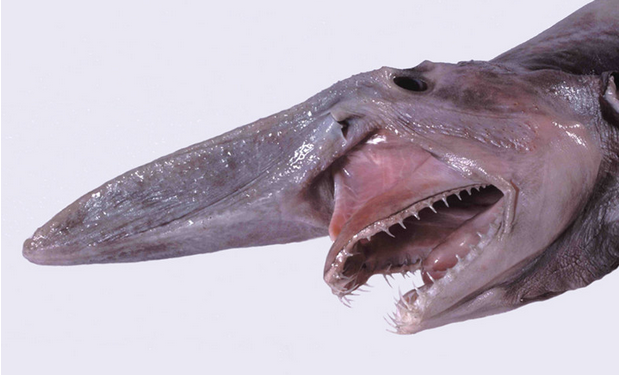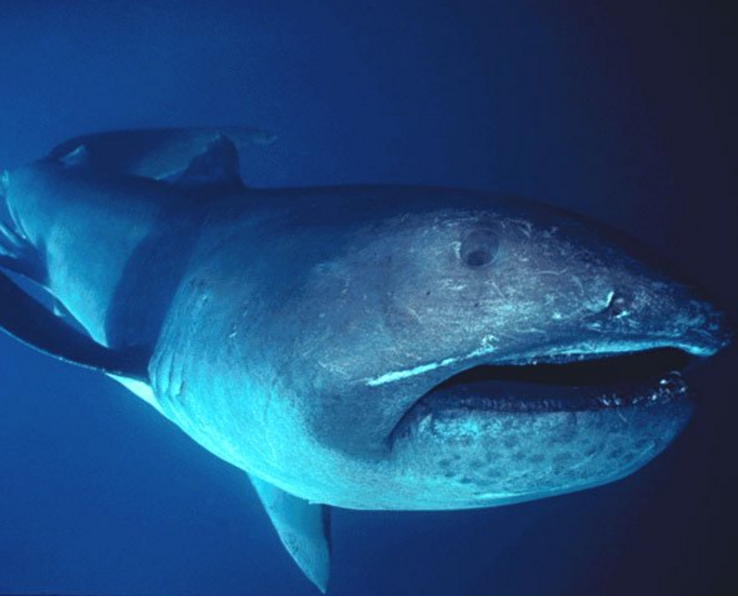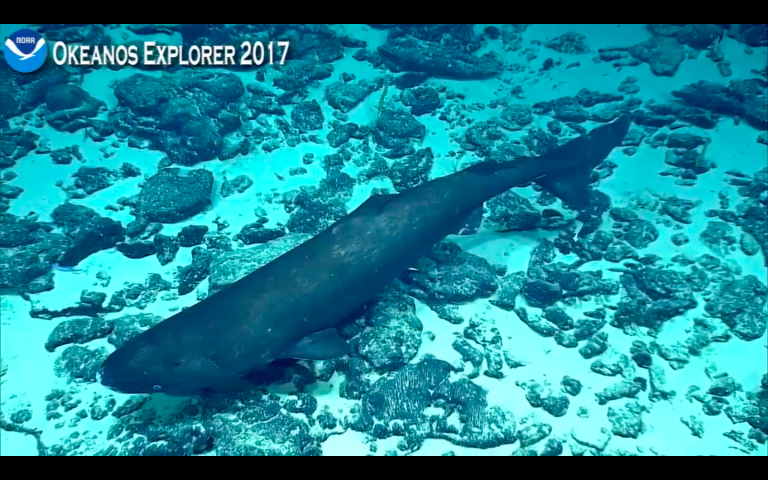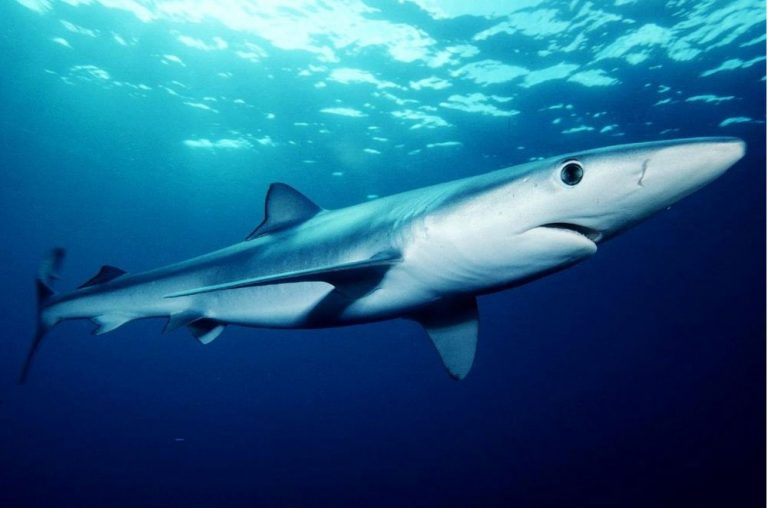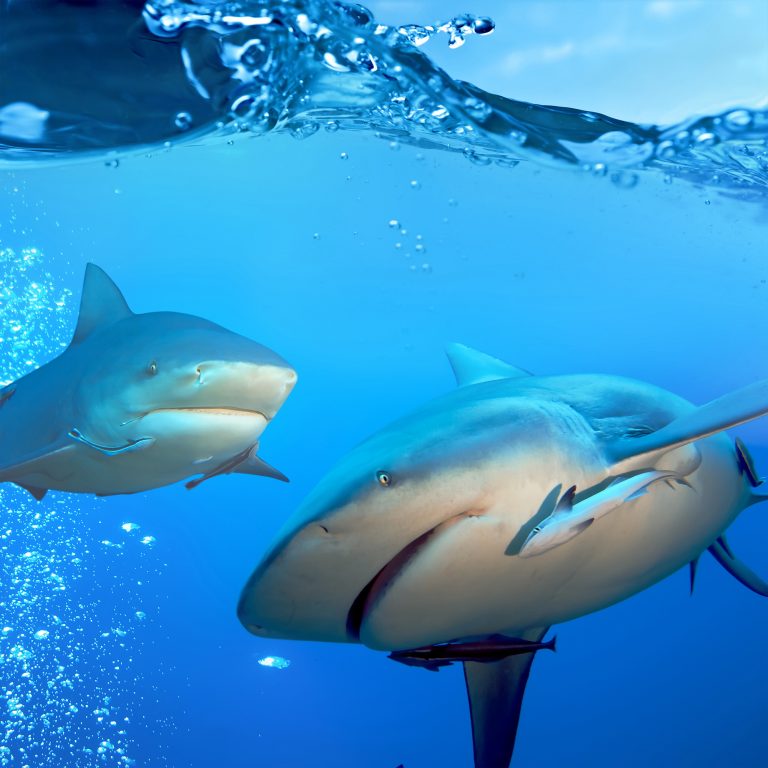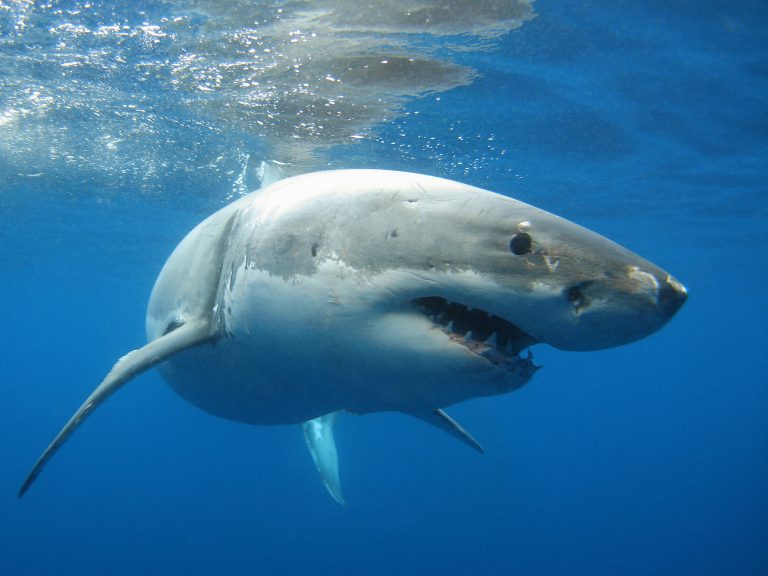Species Profile: The Goblin Shark
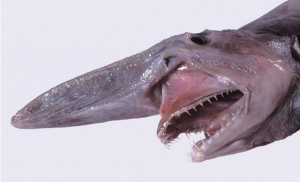
The Goblin shark is a rarely seen, deep-sea shark that was discovered at the end of the 19th century. Sometimes called a “living fossil”, it is the only existing member of the family Mitsukurinidae.
This shark may actually hold the award for the most distinctive appearance ever with its pink skin, flattened sword-like snout, 31 to 62 rows of nail-like teeth, and elongated body. Its blood vessels are close to the skin giving it a pink coloration. It has a flabby body, two small rounded dorsal fins, short and wide pectoral fins, five pairs of gill slits, one anal fin smaller than the dorsal fin, and a caudal fin with a poorly developed lower lobe.
1. Scientific Name
Mitsukurina owstoni
The goblin shark’s scientific name comes from the two men that helped discover it; Kakichi Mitsukuri and Alan Owston.
2. Scientific Classification
- Kingdom: Animalia
- Phylum: Chordata
- Class: Chondrichthyes
- Order: Lamniformes
- Family: Mitsukurinidae
- Genus: Mitsukurina
- Species: Mitsukurina owstoni
3. Life Expectancy
Unknown.
Goblin sharks are yet to be studied in the wild or held in captivity. As a result of this, there is no conclusive evidence about their ages or lifespans.
4. Average/Maximum Length
It is a medium-sized shark. Adults grow to between 3 and 4 meters (10 to 13 feet).
5. Average/Maximum Weight
Between 200 and 210 kilograms.
6. Maximum Swimming Speed
This is a slow moving shark and its actual swimming speed is not documented.
7. Danger To Humans
There are no records of attacks or interaction with humans though due to its deep-sea nature, the chances of meeting people are extremely slim.
8. Reproduction Details
Sightings of the goblin shark are few and rare so there is a general lack of information about its reproduction habits. Most likely, it is ovoviviparous and migrates to mate or spawn since adult females have been seen gathering in the east coast of Japan during the spring.
9. Diet/Hunting Habits Of The Goblin Shark.
They feed on migratory fish mostly at night or in the early morning hours and their diet includes crabs, deep sea fish, shrimps, etc.
Although it is an efficient hunter, its slow speed means it must wait to catch prey unawares. Because its dwelling is in deep-waters with no sunshine, its eyes are tiny and of little use, so it must rely on its other senses to find prey. It can detect prey using smell, and electro-perception. When it notices a prey, it will observe it for a while without moving then slowly move towards it to avoid discovery. Once it is close enough to strike, there is little chance of escape; its teeth are shaped like long needles located in a protusible jaw. Goblin sharks strike with speed, sliding their jaw forward like an extendable grasping claw.
Another method of finding food is to move the sediment at the bottom of the ocean once it senses something is hiding beneath it. Its long snout is perfect for this purpose.
10. Alternative Names
– The Elfin shark
– The “living fossil”
– Imp shark
– Tenguzame (Japanese)
11. Population And Conservation Status
Since it is rarely seen or captured, the goblin shark status in the IUCN is “Minor Concern.” The few times they are caught is usually as bycatch off the coasts of Japan. Besides, their strange and unique looking jaws arouse curiosity and collectors frequently pay from 1,500 to 4,000 dollars to get one.
12. Ancestry And History
There is still some confusion as to how many species of this shark exist due to its elusive nature so there is only one recognized species as of now. However, researchers believe the goblin shark is very closely related to a similar but now extinct Cretaceous shark genus called Scapanorhynchus (Spade Snout). This lineage is about 125 million years old.
13. Distribution And Habitat
This shark species is found close to the sea floor and continental platforms and slopes, at depths of 1,200 to 1,370 meters.
Isolated individuals have been found in the Pacific Ocean, the Indian Ocean, and the Atlantic, so it has a global but non-uniform distribution. They mainly congregate in the waters around Japan, Australia, New Zealand, Guyana, Suriname, French Guiana, France, Madeira, Portugal, South Africa and the United States.
This is one shark that is so odd-looking, people have likened it to an alien from outer space. We think its awesome anyway.

